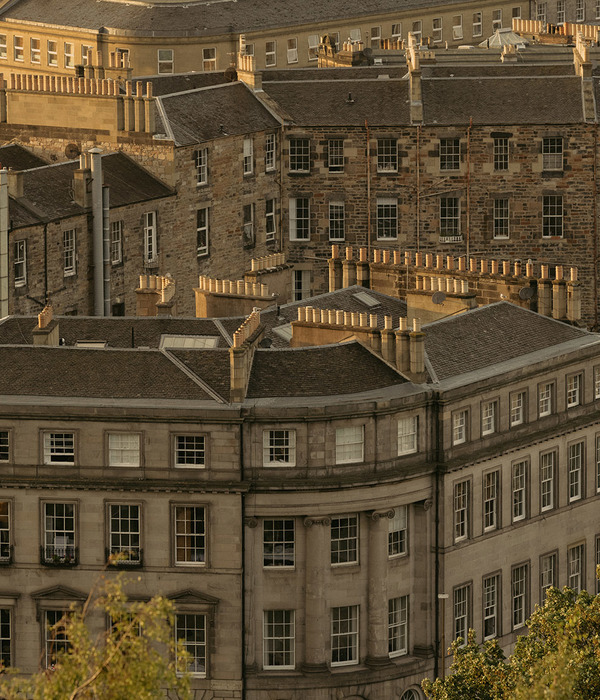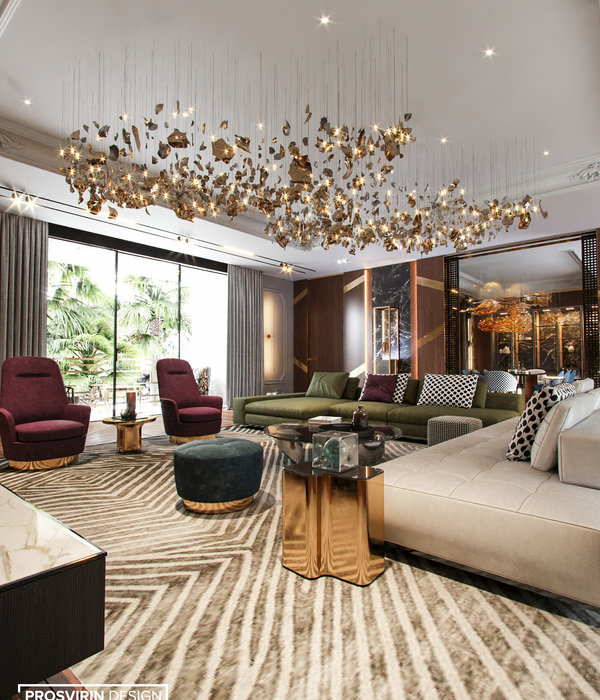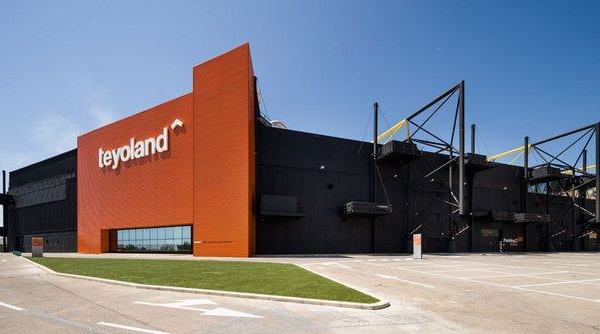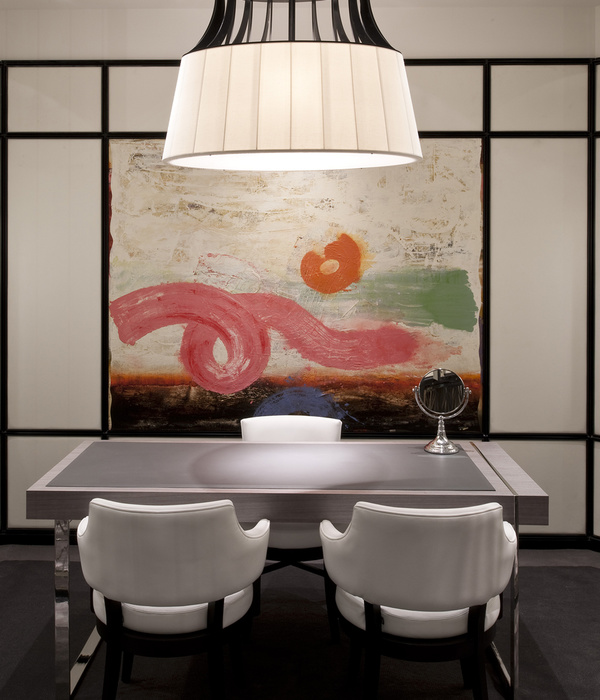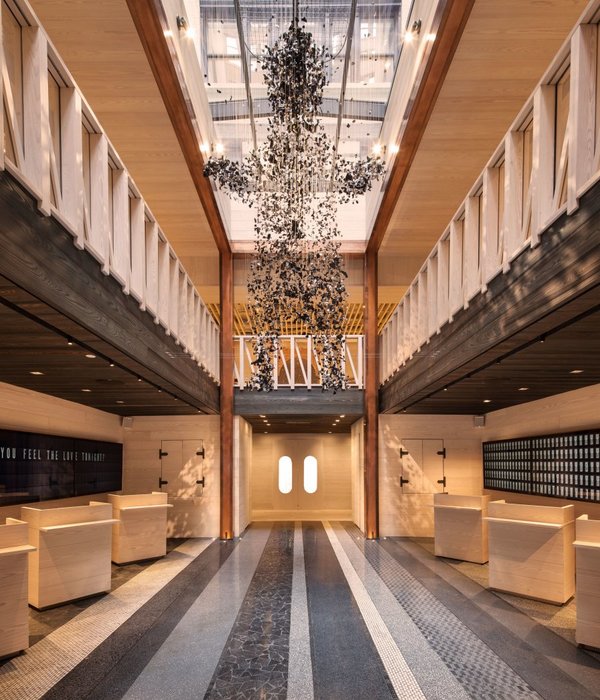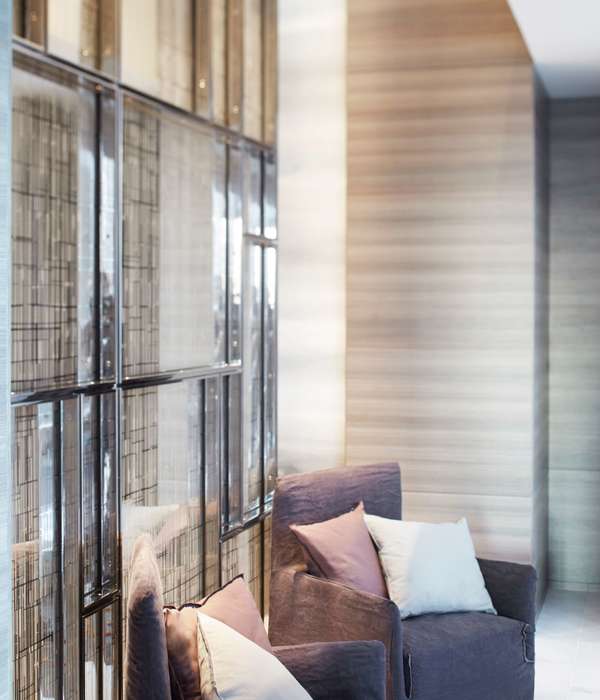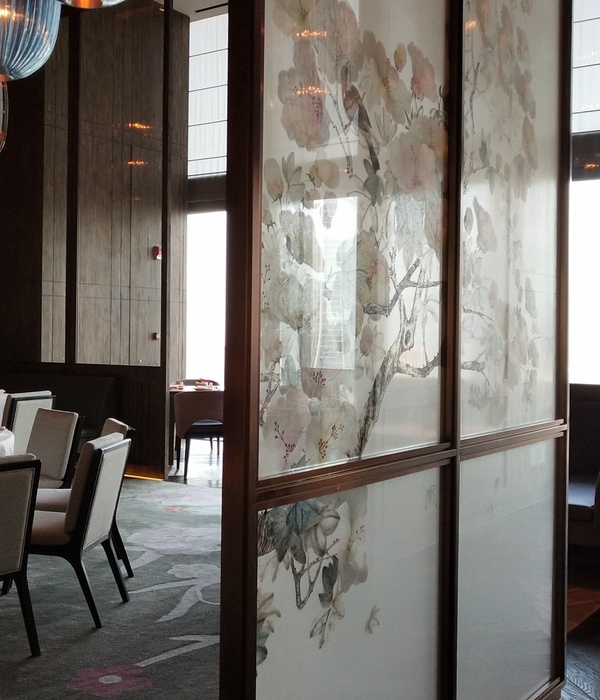Sala Chaweng is a 144-room hotel in Samui Island’s Chaweng Beach, one of the most beautiful beaches in the Gulf of Thailand. It has 2 phases, 52-room for the Beachfront and 82-room for the Roadside. These two phases are divided by a street. Sala Chaweng Beachfront has a single big swimming pool courtyard next to the sea, which is bright and active, whereas Sala Chaweng Roadside is composed of many smaller courtyards, without linear circulation, full of existing trees. The Roadside is shaded, it is more passive, private and quite than the Beachfront.
Each courtyard in the Roadside has a domestic characteristic because we think that it is easier for our guests to remember the spaces. These 5 courtyards are named the Outdoor Stairwell, the Outdoor Dining Room, the Outdoor Living Room, the Outdoor Play Room and the Outdoor Bedroom. Each of them is occupied by household furnitures and elements such as single-flight stairs, 12-seat-round table, sofas, swings, beds and giant lamps. All of these domestic furnitures are placed in-between existing trees and newly planted greenery. Our guests can relax in beds, larger than king-size, shaded by big trees next to the public swimming pool, having a drink served from the pool bar and feel that, in this strange setting, they are indeed on holiday.
We direct our attention to the sky. In every transitions between the courtyards, we open the vertical voids in different shapes, size and materials. Layers of bamboo rectangle voids are placed between the Outdoor Dining Room and the Outdoor Bedroom whereas oval concrete voids in white colour are composed in the transition space between the Outdoor Dining Room and the Outdoor Living Room. We encourage our guests to look up at the sky and to feel the warmth of the sun.
A dominant architectural element of Sala Chaweng Roadside are the white walls. They are long, massive, sometimes concave and sometimes convex. The effects of shadow are what we are interested in when we were drawing the walls. It is only in the spa area that we use colours, dark green and later on pink. These coloured walls set a new spatial experience to our spa guests. As the sun moves, the light changes its direction, architecture becomes alive. Bathtub of the spa room is placed in the garden surrounded by the dark green walls. The clear glass door brings nature into the treatment room. There is no clear distinction between the interior and the exterior spaces in Sala Chaweng Roadside.
There are 4 types of room in Sala Chaweng Roadside, namely Garden Two Bedroom Pool Suite 329 sq.m., Garden One Bedroom Duplex Pool Suite 181 sq.m., Garden Pool Villa 77 sq.m. and Garden Deluxe Balcony 45 sq.m. We also design a variety of objects composed in the room, such as the lamps, the beach bag, rattan shelves and knotted ropes for pulling the drawers. Each room tends to have a private backyard that our guests can relax on a huge circular outdoor bed next to their private swimming pool. The architecture of the interior in Sala Chaweng is the extension of the exterior and vice versa.
If you read advertisements for holidays in a hotel, the hotel itself is supposed to have attractive charateristics. It is only a step from the sea. Its rooms are luxurious. There are several restaurants. There is a spa, which has luxurious products. The advert stresses each of the virtues of the hotel in terms of what it provides, and yet it never concentrates on the hotel itself. With all the attentions to pleasures which the hotel provides there is no recognition that one of these pleasures can be the architecture of the hotel itself. Perhaps one can see why. Hotel architecture is not high up on the lists of prestigious buildings which architects design - it is not a gallery, it is not a museum, it is not even an airport. Hotels simply seem to appear and then to be transformed. This is a pity since at the moment Thailand is producing hotels whose design is original and thoughtful. Of course there are plenty of new hotels whose design is cliched and whose basic elements repeat and repeat the standard expectation of a hotel. Fortunately there is still an opportunity for small design companies to produce works of an altogether higher standard of design. The company Onion founded by Arisara Chaktranonda and Siriyot Chaiamnuay is one such. To stay at the hotel they designed, Sala Chaweng Roadside in Samui Island, is to come to have an appreciation of the design and its relation to the experience of a guest.
At first sight, the hotel and its guest rooms are contained in a series of courts. The guest rooms are on two floors, each room on the ground floor having its own swimming pool. Within this simple outline the designers play a number of games which point to the issues of the nature of the hotel itself. What is the hotel? Somewhere where we go to stay which provides the services that we would normally expect from a home. But it is definitely not a home. We are on holiday. The designers play on the ambiguity of the hotel and its relation to the domestic house. It elaborates this design decision by playing with the categories of inside and outside. In one court, it makes the center piece a sculptural dining table and chairs, in another court, it replaces the seats with apparent beds and standing lamps. Gradually the guests recognise that all these details add up to an interrogation of what belongs to the hotel and what belongs to the domestic. The design as it were is an architectural way of posing this question. We may say that the design of hotel is wholely within the commercial sphere of architecture and interior architecture, but that is no reason why the design has to be purely conventional. The hotel is something more than a building which houses all the usual hotel components. Indeed the form of the hotel questions the nature of the hotel and in this way allows the hotel itself to provide a pleasure to the guest. Buildings which are purely conventional cannot do this. The food maybe good. The view maybe awesome. But the building is invisible, below the point of visibility. A lot of buildings are just that - a lot of buildings. What has happened in this hotel Sala Chaweng Roadside is that the design has entered the form of the building.
To continue this thought, we can see that the design of Sala Chaweng Roadside investigates the relationship between the hotel and the domestic, by also ‘thinking’ the relationship of time. There is the relationship between a holiday and normality. A holiday by definition is outside the time of normality. This space of a hotel is a way of posing the time of a holiday. Some of these relations are best captured in conventional language. In English we are said to stay in a hotel and yet in some sense that is exactly what we do not do. To stay in a hotel is to be there for a limited period which seems to be the opposite of what we mean by staying. To check in and check out seems to violate the idea of staying. It is not difficult to produce more and more of these ‘contradictions’ which come to rest in the idea of the hotel. The design of this hotel is one where the design makes clear the unstable, contradictory aspects of the hotel. It does so by inviting us to enjoy them. If we look at this issue from the point of view of an anthropologist, we could say that design is one way in which a culture teaches itself about its own culture. This is true of architecture but it is also true of cookery.
This kind of design one in which the form of the building determines the building itself is not always present in designs. Hotels very easily fall into a series of similar objects. They easily become anonymous containers for other objects such as lobbies, restaurants, bedrooms, etc. A design company which can still compete in this market and can base its project on the liveliness and thoughtfulness of its design needs to be recognised. In Thailand, given the importance of tourism and of hotel construction, it becomes significant.
For the practice Onion, Sala Chaweng Roadside which opened in April 2019, was a recent project. Onion has produced many other successful projects, while deliberately keeping itself small. There seem to be a difficulty in growing a practice while still maintaining the quality of design. These remarks obviously make a privilege of design. They assume that the architectural value of the building lies in the quality of its design. The justification for a hotel lies not in the luxury of its materials, not even on the desirability of the site, but on the quality of the design. Nor should this be confused with what is fashionable or exclusive. So what is it? We could say that design works at the level of the form of the building. Of course the building must fit together, of course the building has many criteria which must be met, but at the heart of it, it is the architectural form which gives architectural pleasure. This fact should be known to more architects and architectural schools. It is the basis of architecture’s claim to be an art rather than just the practice of building.
Sala Samui Chaweng Beach Resort: ( Road side ) Phase 2
Sala Samui Chaweng Beach Resort
Koh Samui, Surat Thani , Thailand
Year : 2019
Architect: Onion
Interior Designer : Onion
Photograper : Wworkspace
{{item.text_origin}}

